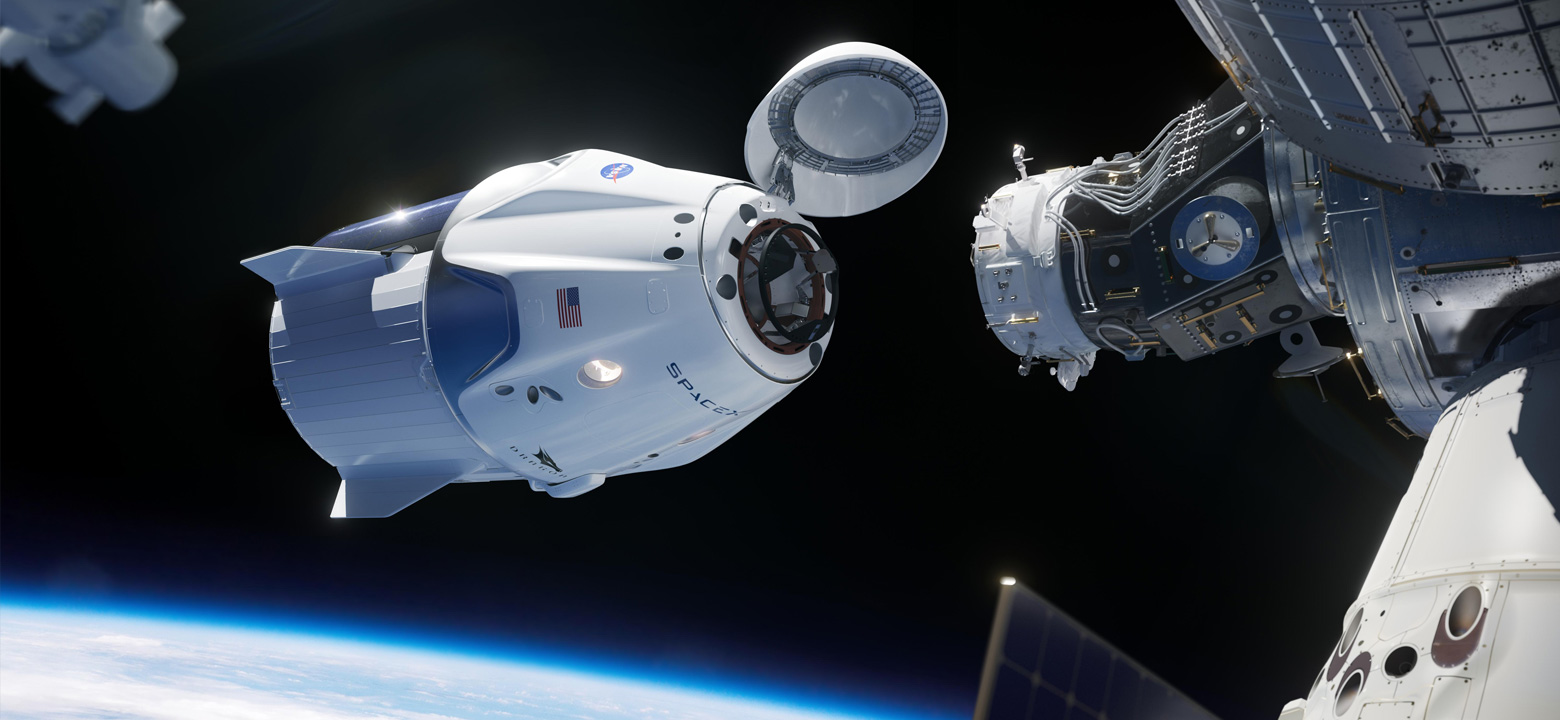
Right now, the commercial aerospace market could use all of the help it can get. With disruptions due to COVID-19, the civilian aerospace industry has faced some losses and uncertainty. SpaceX's recent successes could turn things around, and be a big boom for the U.S. and international markets, research, and more.
Earlier this month, SpaceX was in the news for launching a manned commercially built spacecraft and docking to the International Space Station. While the U.S. has sent manned missions to space before, this was America's first crewed launch since 2011, and the first ever launch using a commercial launch company. Shortly after that, SpaceX placed 60 Starlink satellites in low earth orbit, another key victory for the company.
Right now, SpaceX is driving enthusiasm for space again. While the company itself isn't publicly traded, investors are flocking to other commercial aerospace companies. As an example, Maxar Technologies (a satellite company) is up 58% over the past month alone. Space tourism pioneer Virgin Galactic is up about 40% thus far this year.
It should be noted that this launch wasn't a pleasure trip—the astronauts aboard the Dragon capsule went to the ISS to help further research projects. Astronauts Doug Hurley and Robert Behnken will be assisting in the installation of a new hardware platform that will host scientific experiments.
Starlink satellites are part of a man-made constellation, comprising about 500 individual satellites powered by krypton ion thrusters. SpaceX intends to use these to provide high-speed internet connectivity to underserved areas of the globe, and create a competitively-priced alternative to other broadband services. The company anticipates that expanding into the internet service market will provide the cash flow needed to fund further explorations, including a potential mission to Mars.
NASA stands to benefit from SpaceX's successes, too. A decade ago, the agency retired the space shuttle. As a result, NASA has to pay Russia roughly $90 million a head to transport crewmembers to the ISS. The SpaceX capsule presents a much less expensive alternative—roughly two thirds the cost of a seat on Russia's Soyuz spacecraft. NASA anticipates that collaborating with commercial launch providers will end up saving taxpayers over $20 billion. This frees up a considerable portion of NASA's budget for other endeavors, including plans for another manned mission to the moon around 2024. The ability to collaborate with a commercial launch provider will allow NASA to exercise more control, and expand the aerospace market.
While SpaceX's most ambitious goal to date is to go to Mars, there are many more plans in the works. Right now, they've signed a deal with Axiom to transport three space tourists to the ISS in October 2021 for the first ever completely private trip to space. If all goes well, Axiom intends to provide private space flights every six months. SpaceX also plans to make another launch this August.
SpaceX, Ceres Robotics, Sierra Nevada Corp., Blue Origin, Tyvak Nano-Satellite Systems Inc., and nine other private companies are eligible for NASA's Commercial Lunar Payload Services program. This program aims to deliver robotic payloads to the moon as one of the initial stages of NASA's Artemis program, which aims to establish a long-term human presence on the moon by 2028. Starship and Super Heavy, a reusable rocket pair, may touch down on the lunar surface in 2022.
Prior to this, NASA was effectively the producer and consumer of their own goods, which isn't necessarily the healthiest environment for innovation or efficiency. While they worked in conjunction with some commercial companies, none of them have been on the scale of SpaceX.
SpaceX's recent victories have proven that NASA doesn't need to do everything for themselves; instead, they can collaborate more extensively with a commercial aerospace company and get results. Being able to turn to domestic companies for help will significantly lower the cost of research and development, which could potentially reshape the aerospace industry from the ground up. Private companies bear the entire cost of research, development, production, testing, and maintenance, not taxpayers. Expanding the commercial aerospace market invites competition, spurring innovation while decreasing costs.
SpaceX and NASA aren't the only entities benefiting here, either. Boeing, Blue Origin, and other aerospace companies have recently been contracted for rockets and other needed equipment.
Though the U.S. has sent humans to space before, SpaceX's recent launch is no less historical. It marks the first time that a private company was able to send people to the International Space Station—and a new way of launching manned missions that's more sustainable, less expensive, and more efficient. These recent victories create the opportunity for major advancements in research and development, and NASA, SpaceX, and other aerospace entities alike stand to gain.